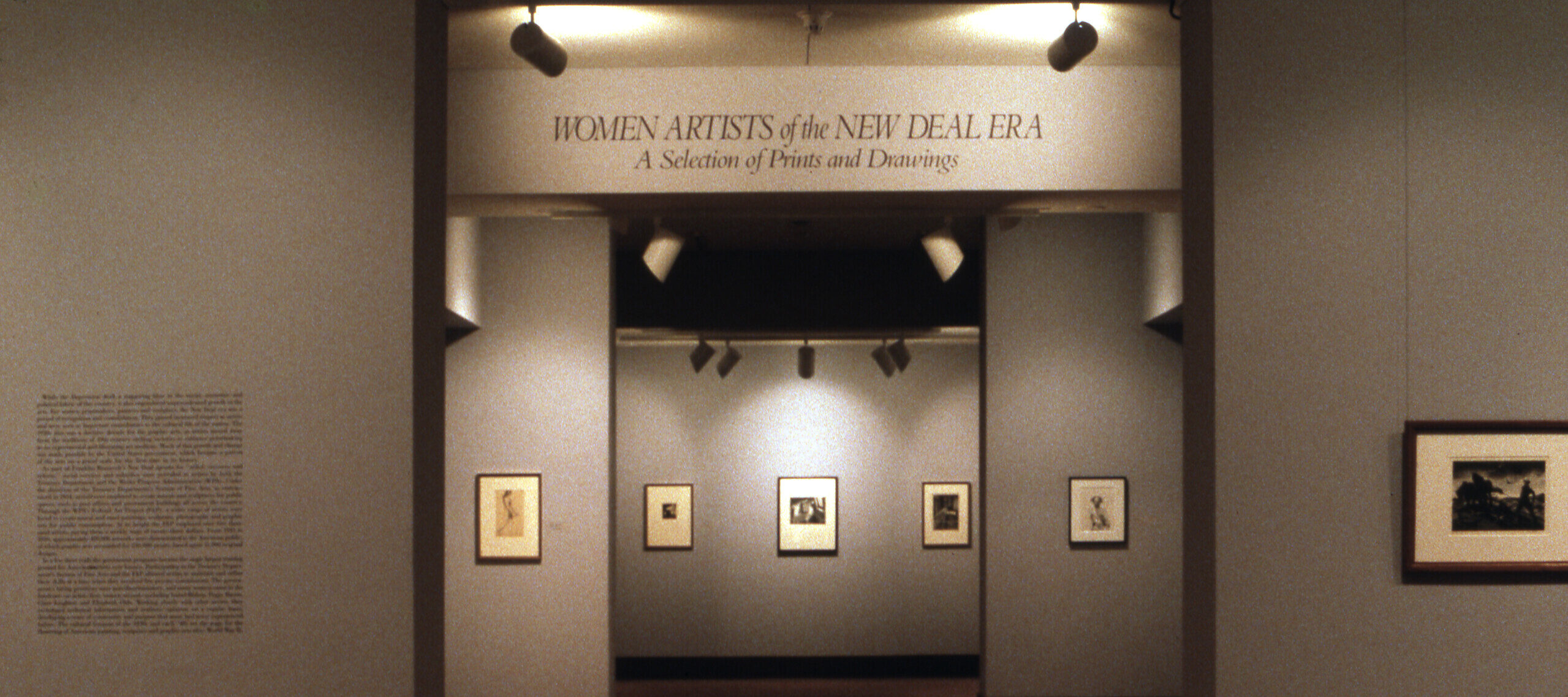NMWA looks back fifty years at an artistically fascinating period in American history with the exhibition Women Artists of the New Deal Era: A Selection of Prints and Drawings. The rich imagery of the eighty works included in the show reflects the social concerns and artistic range of women artists working for the Works Progress Administration (WPA) during the 1930s and ‘40s. The exhibition is on view from October 18, 1988, through January 8, 1989.
In conjunction with this show, the NMWA Library and Research Center will be presenting Irene Rice Pereira’s Library: A Metaphysical Journey. This smaller exhibit will feature a selection of books and writings from the personal library of Pereira, an abstract artist who worked on the WPA and taught at the New York Laboratory School of Design in the 1930s.
The New Deal era was a period of great activity and vitality for American artists. It is historically important that women played a significant role and were, in fact, part of the mainstream of cultural development at this time. Statistically, forty percent of active artists at this time were women, many of whom participated in the WPA’s mural, sculpture, painting, and printmaking programs.
Women Artists of the New Deal Era: A Selection of Prints and Drawings is the first survey show to recognize the accomplishments of women graphic artists of this period and how they used printmaking to capture with subtlety the social themes that concerned them. This show also details the importance of the many innovative printmaking techniques that were revived or invented during the years of the New Deal.
Over half of the works in the exhibition are lithographs, including Minna Citron’s Dress Circle-Carnegie Hall and Lucienne Bloch’s Diego Rivera, a portrait of the famous Mexican muralist. Notable works in other media include Isabel Bishop’s etching Office Girls, Alice Neel’s ink drawing Joe Gould, and Clare Leighton’s wood engraving Loading. The artists of the WPA earned $23 per week, giving them the opportunity to pursue their artwork, much of which was concerned with social themes related to the common man or woman.
“Women Artists of the New Deal Era: A Selection of Prints and Drawings should be considered an important contribution to the scholarship on women artists of the Depression era,” commented Helaine Posner, NMWA’s Curator of Contemporary Art, “it is an exhibition which easily engages a wide range of audiences through a variety of recognizable subjects and themes. The works on display are both documentary and highly interpretive.”

Installation image of Women Artists of the New Deal Era: A Selection of Prints and Drawings
The Artist,
Grace Arnold Albee
As a child, Grace Thurston Arnold had become fascinated with the engraved illustrations in her grandfather’s books; as an adult, she made this medium her specialty.
The Artist,
Isabel Bishop
A member of New York's 14th Street School, Isabel Bishop is best known for her graphic art and urban subject matter.
The Artist,
Elizabeth Catlett
Sculptor and printmaker Elizabeth Catlett used her art to advocate for social change in both the U.S. and her adopted country of Mexico for almost three-quarters of a century.
The Artist,
Lee Krasner
Lee Krasner was one of the first generation Abstract Expressionist painters. Through six decades devoted to art, she continually explored innovative approaches to painting and collage.
The Artist,
Doris Lee
Throughout her career, Doris Lee sought to portray everyday, contemporary American life in a style that that was easily understandable to viewers.
The Artist,
Alice Neel
In her portraits, Alice Neel sought to reveal the inner lives of her sitters, who included relatives, neighbors, and art-world celebrities.
